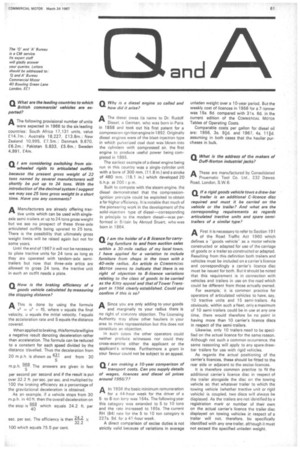Q How is the braking efficiency of a goods vehicle calculated by measuring the stopping distance?
Page 63

If you've noticed an error in this article please click here to report it so we can fix it.
AThis is done by using the formula v2 u2 + fS, where v equals the final velocity, u equals the initial velocity, f equals the acceleration rate and S equals the distance covered.
When applied to braking, thisformula will give a negative result denoting deceleration rather than acceleration. The formula can be reduced to a constant for each speed divided by the distance travelled. Thus the deceleration from
20 m.p.h. is shown as 431 and from 30 m.p.h. 968. The answers are given in feet
per second per second and if the result is put over 32.2 ft. per sec. per sec. and multiplied by 100 the braking efficiency as a percentage of the gravitational deceleration is obtained.
As an example, if a vehicle stops from 30 m.p.h. in 40 ft then the overall deceleration on
the stop is 96-8 which equals 24.2 ft. per 40
sec. per sec. The efficiency is then 24.2 100 which equals 75.5 per cent.








































































































